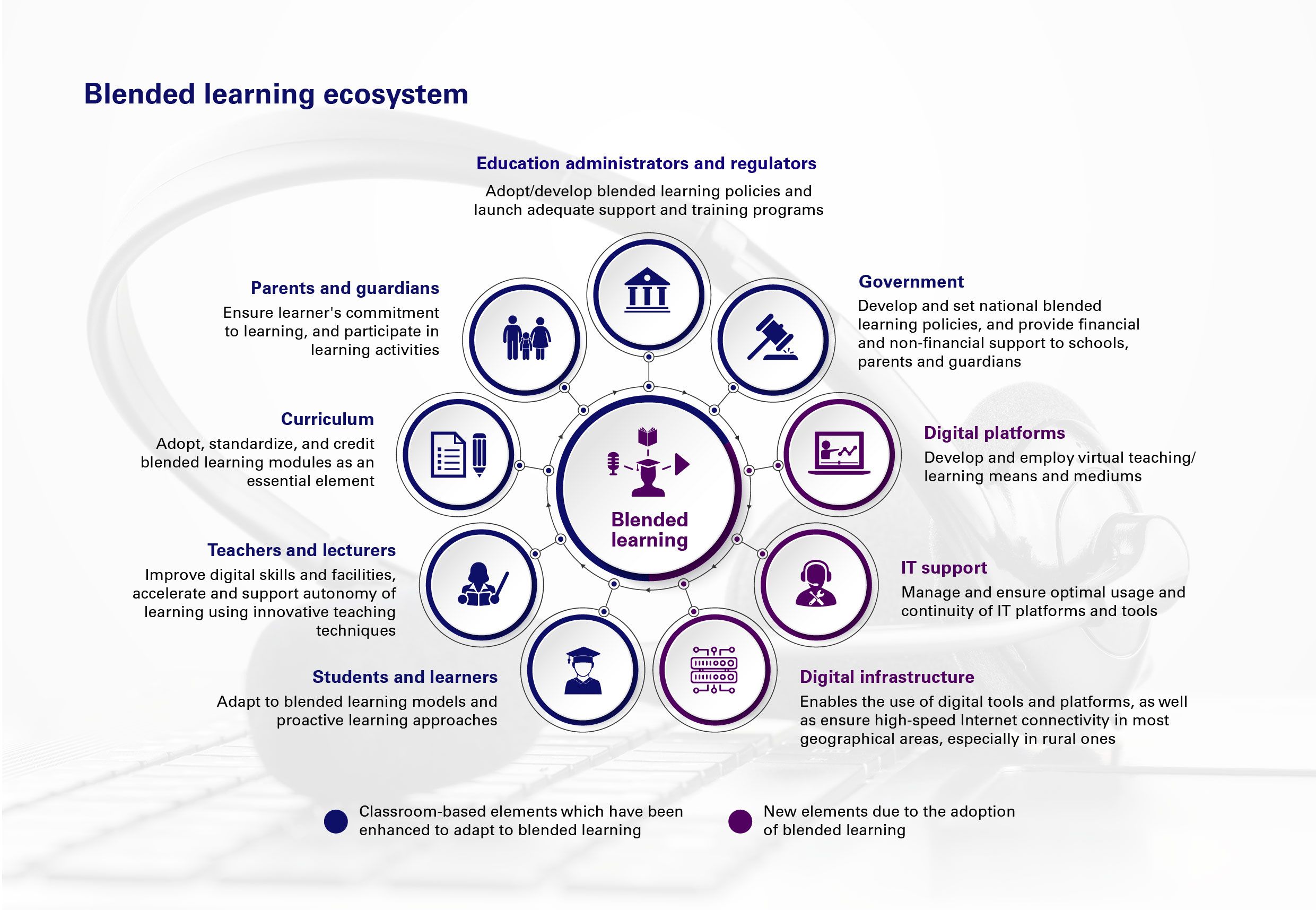Education systems around the world had to adapt to the seismic changes brought on by the Covid-19 pandemic, causing a digital shock and a transition into distance and e-learning. Many countries, had to quickly migrate to online and e-learning solutions, transitioning curricula, classes and lectures onto digital platforms. Whilst dealing with an ever-evolving challenge of maintaining education continuity in the face of adverse circumstances, the past eighteen months have provided an opportunity to assess the future of learning within the education system and make a step change in its evolution.
Beyond the short-term changes that we can observe as we emerge from strict lockdowns and movement restrictions in many countries, there is evidence to suggest many industries will not be the same as they were before, education included. The shift in consumer behavior, economic priorities and the implications of the accelerated digital transformation in organizations will require students at all levels to obtain new skills that are relevant in the digital world we live in now and that of the future. This includes developing adaptable skills for emerging jobs and industries that have yet come to fruition.
This study considers the evolution of blended learning for it to become more digitally enabled, embracing Virtual Reality and immersive approaches. It aims to present a model of how digital blended learning can be part of education transformation.

This digitally enabled approach to blended learning is applicable throughout the education landscape, for universities, Technical and Vocational Education and Training (TVET) and K-12 schools. We also consider the wider questions around the future of the education landscape to discover whether it is still fit for the future.
This publication has been developed after much consideration of what could and should be done to reimagine the education system across the world. We believe there is much of our thinking that is worthy of further consideration for application within the Middle East and hope that our findings cause education leaders to consider what it could mean for their regions, and how we can reimagine our own education system and the role that digital blended learning has within it.


